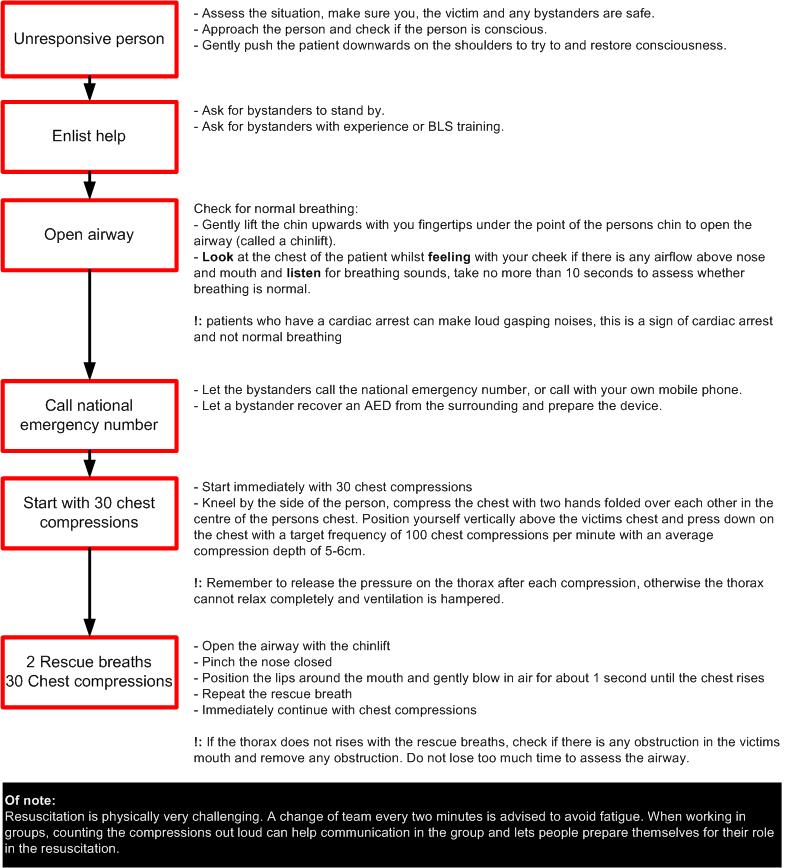Cardiac Arrest
Content is incomplete and may be incorrect. |
Survival of cardiac arrest continues to be very poor. Survival is dependent on the characteristics of the cardiac arrest, on the patient’s medical history, and the time between the cardiac arrest en start of resuscitation. The introduction of the automated external defibrillator (AED) has dramatically increased survival of out-of-hospital cardiac arrest victims.
Basic Life Support
To increase survival after cardiac arrest it is vital to decrease the time to resuscitation. The training of persons in basic life support can increase bystander participation in performing cardiopulmonary resuscitation. A straightforward protocol has been created to execute basic life support. The following steps can be followed to perform basic life support.

If at any stage the patient is consciousness, has normal ventilation or recovers consciousness find out what is wrong with the person and get help if needed. Repeated reassessment is necessary to detected deterioration of his condition.
Automatic external defibrillator (AED)
The automatic external defibrillator is a complex device that analysis rhythm of patients and can deliver a shock to defibrillate patients. It detect whether a patient has ventricular fibrillation or an other arrhythmia. When in detects a shockable rhythm it advises the user to deliver the shock, all settings are automatically adjusted. It also remembers the events so that the tracing can be recovered and analysed after the resuscitation.
When the AED is attached during BLS let the AED assess the rhythm. Do not manipulate the person while the AED assess the rhythm to prevent motion artefact disturbing the detection algorhythm. Follow the instructions of the AED, this can be either a shock of no shock. After shock or non-shock immediately continue with chest compressions and rescue breaths. Continue with cardiopulmonary resuscitation until the AED rechecks the rhythm.
Advanced Life Support
Protocol
Medication
Bradycardia
Tachycardia
| Important Lesson |
| Reversible causes: |
| THE FOUR H's |
|
|
|
|
Special circumstances
| Important Lesson |
| Reversible causes: |
| THE FOUR T's |
|
|
|
|
Paediatric life support
Elektrolyte disorder
Poisoning
Drowning
Hyperthermia
Elektrocution
Anaphylaxis
Traumatic Cardiorespiratory Arrest
References
- 1. ESC Textbook of Cardiovascular Medicine, 2nd Edition
- 2. J.P. Nolan et al. / Resuscitation 81 (2010) 1219–1276